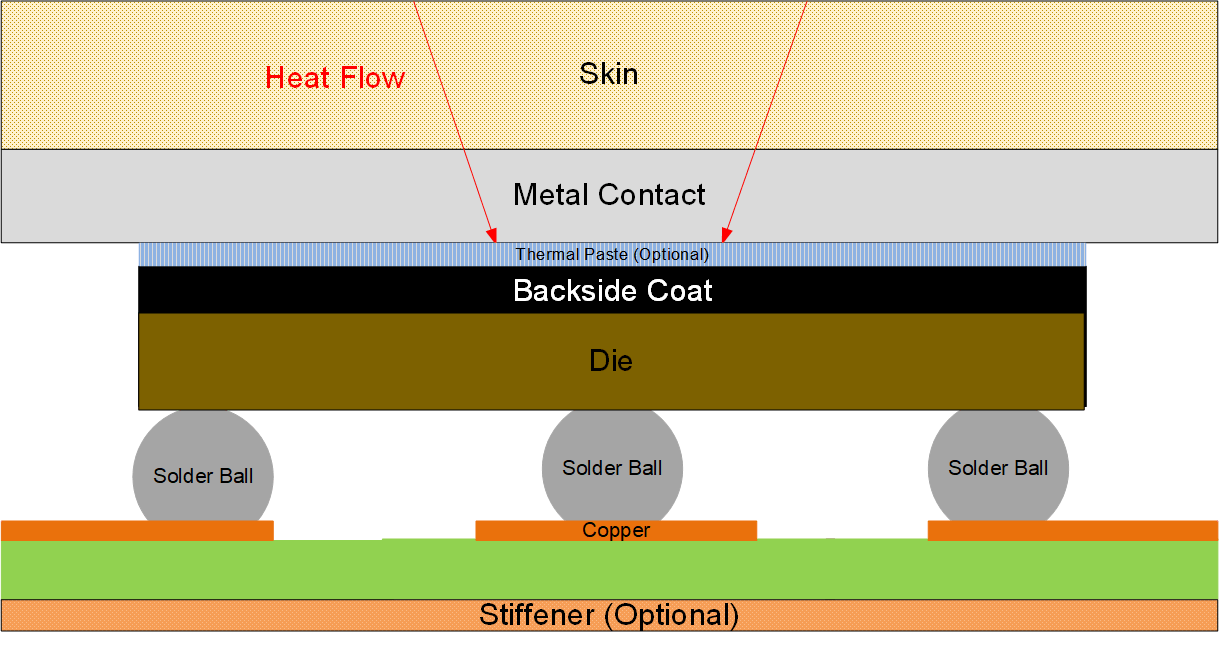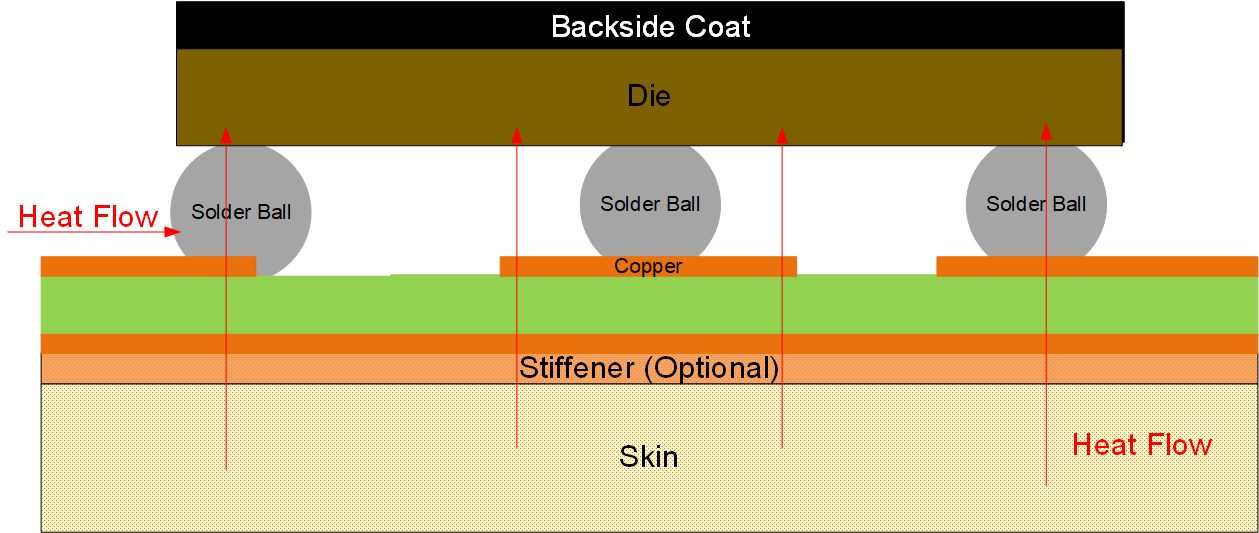TIDUDW4B January 2019 – December 2024 CC2640R2F , TMP117
- 1
- Description
- Resources
- Features
- Applications
- 6
- 1System Description
- 2System Overview
- 3Hardware, Software, Testing Requirements, and Test Results
- 4Design Files
4.3.2.1 WCSP (YBG) Package
The Bluetooth-Enabled High-Accuracy Skin Temperature Measurement Flex PCB Patch uses the TMP119AIYBGR to demonstrate one potential technique for measuring skin temperature. In this design, the WCSP version of the TMP119 has the coated backside placed directly against the skin of the wearer, and heat is conducted from the skin directly to the TMP119. In an end system that uses this technique the TMP119 can be covered in a soft over-molding to protect the device from damage. Figure 4-2 shows the TMP119 is located on the skin side of the patch.
 Figure 4-2 TMP119AIYBGR Layout in PCB
Editor
Figure 4-2 TMP119AIYBGR Layout in PCB
EditorThis technique can be modified for applications that use enclosures but still want to measure skin temperature such as smartwatches or earbuds. The TMP119 can be placed against a metal contact to conduct heat from the wearer's skin, as shown in Figure 4-3. Alternatively, the underside of the device can be used to transfer heat as shown in Figure 4-4. If using the underside of the package, consider using a board stiffener made of a bio-compatible and thermally conductive material such as stainless steel.
 Figure 4-3 Example Stack-up for External
Case Sensing Using Top Side of TMP119 in WCSP Package
Figure 4-3 Example Stack-up for External
Case Sensing Using Top Side of TMP119 in WCSP Package Figure 4-4 Example Stackup for Sensing
From Underside of TMP119 in WCSP Package
Figure 4-4 Example Stackup for Sensing
From Underside of TMP119 in WCSP Package